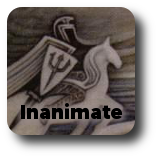 Hi everybody! Work over at the Tesla Multiverse continues, as we finalize the members of each archetype and solidify the common skeleton in preparation for commons-playtesting and the higher rarities. Last week, we discussed the types of archetypes and the roles they serve - this week, we'll be discussing the types of cards in an archetype, and how this helps us design commons!
Hi everybody! Work over at the Tesla Multiverse continues, as we finalize the members of each archetype and solidify the common skeleton in preparation for commons-playtesting and the higher rarities. Last week, we discussed the types of archetypes and the roles they serve - this week, we'll be discussing the types of cards in an archetype, and how this helps us design commons!We're going to look at this topic from an interesting perspective. In combination Shadows over Innistrad and Eldritch Moon, an interesting sub-archetype has developed which is directly comparable to an archetype in Tesla - {G}{B} "sacrifice your stuff for profit", which is an overlap of {G}{U} Investigate and {G}{B} Delirium.
First off, we have two common rewards in Eldritch Moon. The confluence of double-small-set drafting and a smaller common pool than a large set means that these rewards, while not directly comparable to commons in Shadows over Innistrad, are not exactly incomparable as small-set commons were before. In fact, explicitly discussed in the article about Double Small Set Drafting is that they desired build-around commons to shake up the format. Common build-arounds are exciting but understandably more difficult to develop - however, we can see quite a few in SOI block, such as Pyre Hound, which was discussed last week.
The interesting thing about these two is that they obviously overlap in a significant manner, but not entirely. They are each skewed by the other archetypes the color comes into contact with, and by different desires. Gavony Unhallowed works off of any death, but only of creatures, because black doesn't get Investigate - whereas Bloodbriar works off of any permanent, but only sacrifice, because green gets Investigate. Both colors get Emerge and Delirium, however, so they each have a vested interest in creatures dying.
The variety of rewards means we don't have cards feeling same-y, and importantly, the synergies with other archetypes are vital to ensuring that the format has variety and intrigue. These cards serve many roles in many archetypes, even if they do have one prevailing and obvious archetype each. In addition, they also serve different purposes for players. Gavony Unhallowed is a safety net, while Bloodbriar is a signal for a strategy (and a lesson to new players that sacrifice can be sought out).
G/B Enablers
Next, we have some enablers. Byway Courier is an obvious one; it provides a bonus to each of these rewards. Ghoulcaller's Accomplice is interesting in that it 'gives you back' a body for Emerge, but costs you Delirium; it's a strategic decision based on timing (do I wait for another creature in the grave?) or importance. That's, in other words, an interesting decision, though tough calls like that can't be too common.
Merciless Resolve is interesting enough to deserve its own paragraph! It provides the flexibility of determining which aspect of {G}{B} one wants to enable. The land helps Bloodbriar and Delirium; the creature helps Gavony Unhallowed and Bloodbriar and, more rarely, Delirium. Cards like this are vital to a nuanced archetype, and to creating a rich format. It's a mistake to design archetypes as rails; the decks rarely come together as designers anticipate. A {G}{B} deck is far more likely to include enablers and rewards from a variety of archetypes which include {G} and {B}, rather than a significant amount of {G}{B} archetype rewards. For this reason, the various archetypes must work well together within a color, and even across colors.
Tesla Counters
And that's the big takeaway; every card we've dissected in this archeype does a great job of sharing synergy with other archetypes. Looking to Tesla, we can see some of our own cross-synergies. In {G}, we have Raid, Canisters, +1/+1 Counters, and Sacrifice. Canisters obviously work well with Sacrifice, and they let you create 'vigilant' attackers after triggering Raid. The odd one out is +1/+1 counters - but we can just ensure that the other archetypes include cards that work well in the +1/+1 counter archetype as well. For example, Mutated Man (designed before Bloodbriar, heh!), Aether-warped Predator, and Rhox Savage fill all of those roles nicely.
Another vital lesson is that archetypes should have different directions. The {G}{B} Delirium archetype includes this sub-archetype, built out of cross-synergy cards, and has many ways to enable it. Likewise, we want decks in Limited to be less of a checklist of essential cards, and more of a product of interesting synergies and interactions.
While understanding the need for nuance and versatility is hardly the same as the skill of designing a card with those qualities, it's certainly a start. Using the lessons from this article, let's endeavor to give each archetype in Tesla interesting strategic depth and cross-archetypal roles!
Until this Thursday, have a good week!

Nice analysis and synthesis.
ReplyDelete